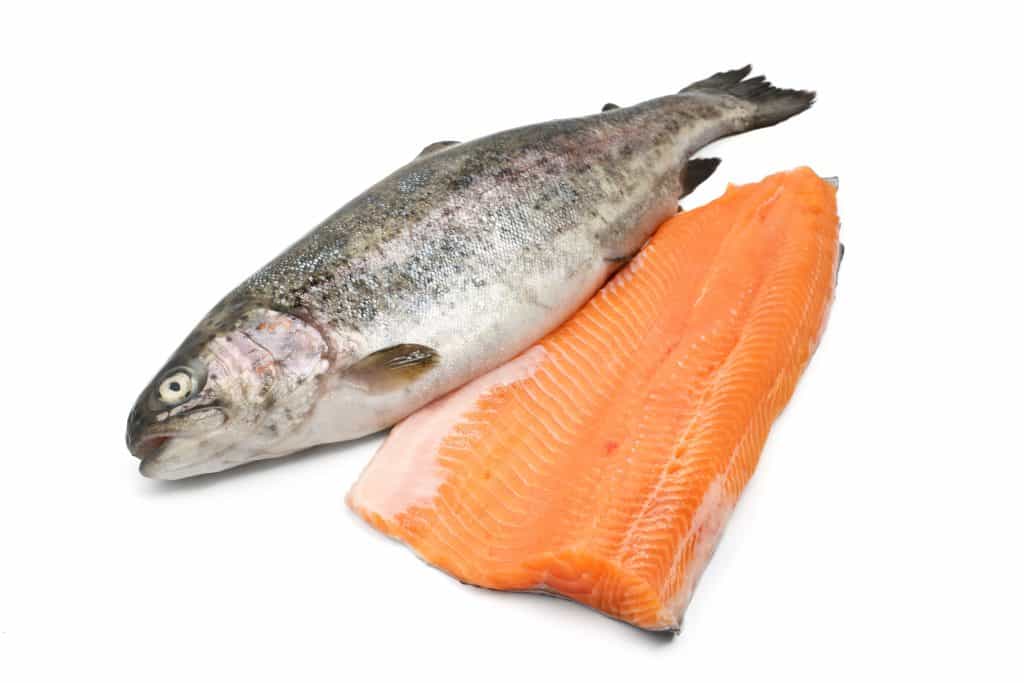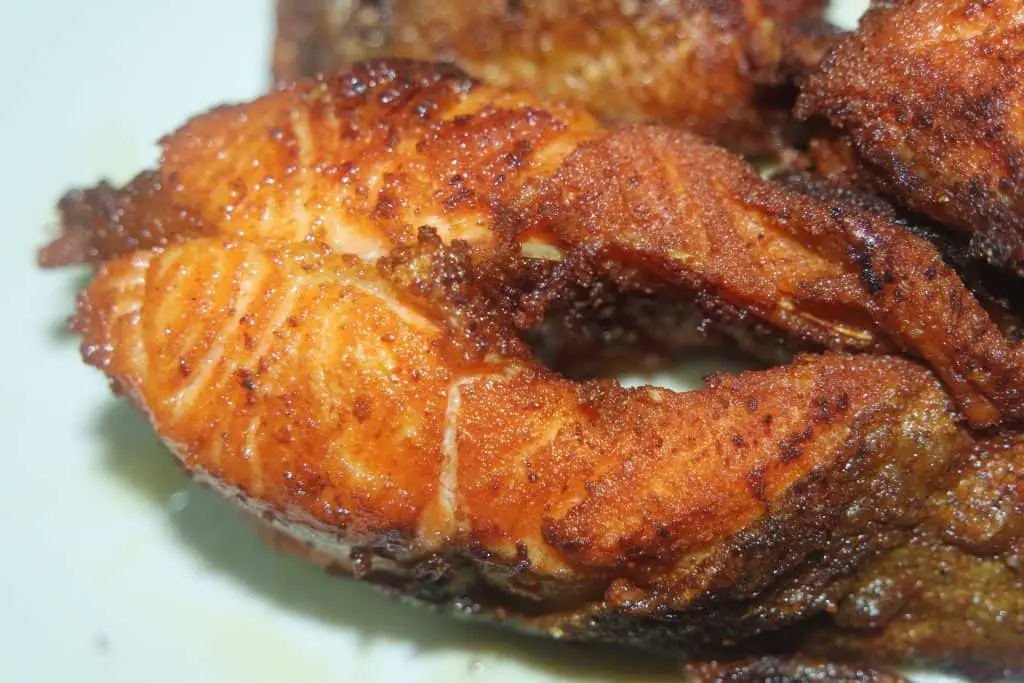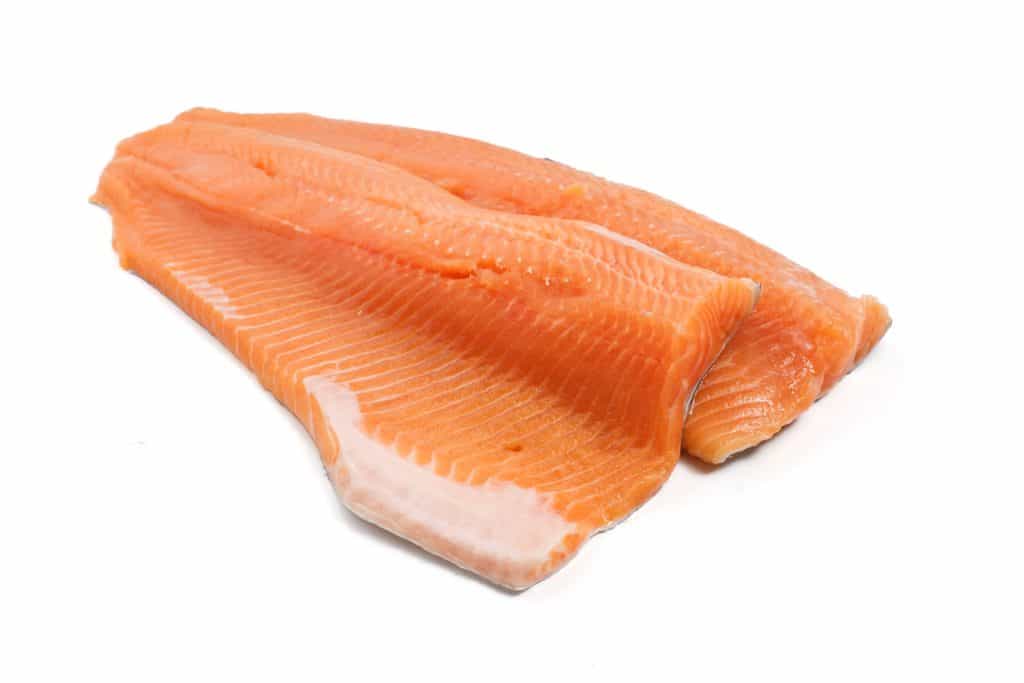Of all the fish out there, salmon and trout are among the most popular in the world. However, some people confuse salmon for trout and vice versa. While they share a few common aspects like their diet and characteristics, some differences between salmon and trout exist.
Both species feed on Krill that makes them have their pink color. Once cooked, their meat is almost identical and it might be rocket science to differentiate the tastes of each. The first aspect to use as a pointer when differentiating salmon vs trout is their habitat- trout live in freshwater while salmon are found in saltwater areas.

The Main Differences between Salmon vs Trout
Any time you head out to test your favorite flies or bait, you most probably will be asked the fish you caught. Knowing the differences between salmon and trout can help you get your answers and facts right. You can’t imagine the embarrassment of confusing the two yet you have been fly or spin fishing for years.
Because of how similar some of these buddies look, it poses a challenge identifying each correctly without lab testing their tissues. Who has time for these? However, there are a few differences that give us a sorting strategy. The variations of trout and salmon are evident in their nutritional density, taste, and appearance. The differences might work in ALL instances but for general clarification purposes, they will be good enough.
1. Biological Classification
We wouldn’t want to get too deep into the scientific aspect but there are various trout types and those of salmon too. Both fish fall under the same family (salmonid). However, some types of each fish are closely related compared to others. Rainbow trout, cutthroat trout, and all salmon types apart from Atlantic Salmon are under the Pacific trout and the Oncorhynchus salmon family. These two categories are mostly found in the Pacific Coast and are common catches to California and Alaska. Nowadays, they are also in large numbers in the Great Lakes.
Brown trout and Atlantic salmon are under the Salmon. These are termed as true trout and salmon. Like in its name, the Atlantic salmon resides in the Atlantic and can be found in Europe and North America. Brown Trout in North America isn’t native to the areas as it was brought in by European Settlers.
Lake trout, bull trout, Dolly Varden, and brookies are in the Salvelinus family and are sometimes called chars. They are the widely-spread than the other categories and can survive in single-digit temperatures. They are mostly found in the colder northern waters. The majority of the ones in North America can be found in Alaska and Canada and American fly fishers hardly get them.
2. Color Pattern
There is more patterning on salmons just above their lateral lines. Trout on the other hand have patterning almost everywhere and it is denser than in salmons.
3. Appearance
Trout are thicker with rather rounded heads. They are scalier from the lateral line to the adipose fin. Salmons are streamlined with concave tails and their upper jaws don’t exceed their eyes.
The anal fins of trout have fewer rays or about a dozen. Those on salmon are 13 or could exceed the number.

4. Habitat
This as the primary difference between the two fish can pose an exemption at some points like spawning. Trout are associated with freshwater and salmon with saline areas. Salmons are known for returning to their spawning areas annually. They leave the ocean and head to the freshwaters upstream of rivers and streams to spawn.
Rainbows will spend their earlier stages in freshwater and when it is time to get into the saltwater areas, their bodies biologically respond and create adaptation mechanisms for saline areas. Rainbow trout that have shifted locations to the salts are referred to as steelhead. In 1989, DNA tests done on steelhead or a rainbow showed that it isn’t a true trout and it was scientifically classified as a salmon.
5. Reproduction Aftermath
After spawning, salmons die meaning that these fish spawn only once in their lifespans. Trout can spawn severally and might not return into the saltwater afterward. However, they can stay around for a while before transiting into the ocean. This allows them to grow bigger as they prepare to face predators in the ocean.
6. Nutritional Value
Both have nutritional benefits. However, salmons are fattier but with lesser cholesterol. Trout have fewer protein, calories, and saturated fat compared to the salmon in the same amounts. While trout have higher concentrations of vitamin B, salmon have D vitamins in plenty.
For instance, a serving of 100g of salmon contains 150 calories thereabout, 3g of saturated fat, and 22g of protein while the same serving of trout contains 120 calories, 20g of protein, and 2g of saturated fats. Trout has more folate while salmon contains pantothenic acid in higher amounts.
7. Taste
Salmon’s flavor is sweeter and more pronounced than the mildness and unassuming flavor in trout. Trout meat easily picks up seasonings and spices. Trout are firmer after baking or grilling while salmon is delicate with flaking flesh.
8. Bones
Unless you are prepping a good meal after a long day with the flies, it will be difficult to study their bones and differentiate salmon from trout. The filleting and deboning process of the two fish is almost similar. Salmons have larger bones while those of trout are smaller, difficult to see, and are often lost in their meat.

9. Health Benefits
Both trout and salmon are beneficial to health when consumed in their right amounts. Salmon offers more omega-3 fatty acids that lower cholesterol levels and help to counter inflammation in the body. Most people consume it for its selenium and antioxidant properties that have positive effects on brain health and metabolism regulation. Depending on the consumer’s fitness goals at the moment, health conditions, and preferences, either salmon or trout may be healthier to them. However, nutritionists consider salmon the healthiest option.
Takeaway
Understanding the differences between salmon and trout aids the angler to properly identify fish in the areas they angle and types of lures and flies they can pack for success. Some of the salmon and trout are under the protection of the law. You wouldn’t want to get in trouble because of not knowing restocking plans and population counts of the areas you intend to fish in.
Finally, why not consider going for and eating something new and different, like tarpon or bowfin?